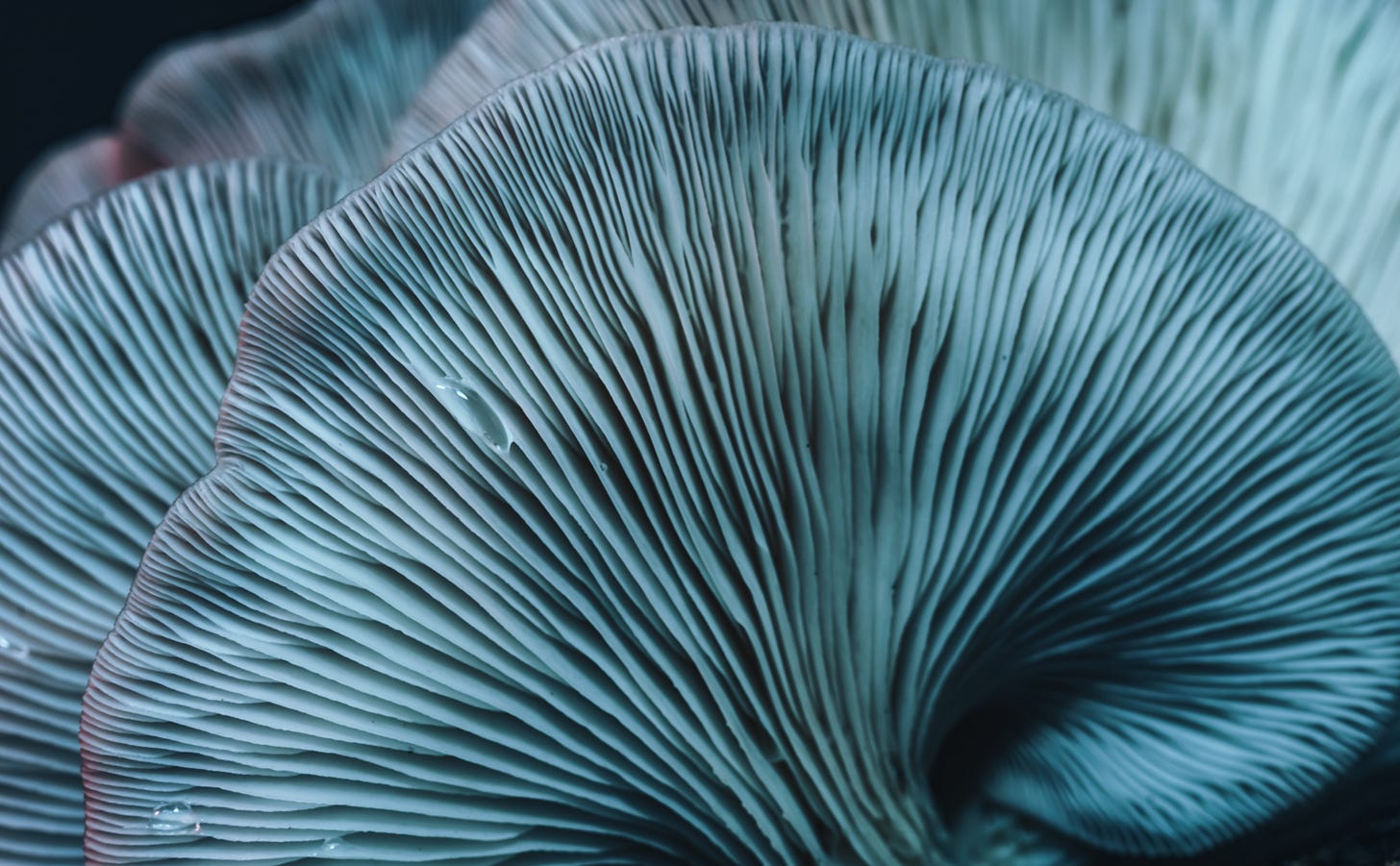Thanks to Daniel for suggesting the documentary and I dedicate this to a new graduate, Anna McKenzie, and all graduates this spring in search of a meaningful future.
There is a civilization, or something similar that lives beneath us in the earth and comprises an extensive communication network. It is alive, shares our same DNA, and sends and receives signals. It’s called mycelium, the root structure that gives rise to mushrooms. We know relatively little about it and, as we learn about what it is and what it does, it may help us to solve some of our most serious problems.
The vast root structure of mycelium, the underground communication network, along with mushrooms, yeast and molds which are their fruits in the light world, are an entire kingdom called “fungus.” We share much more DNA with mushrooms than we do with plants, and some fungi can even move or seem to crawl. Much of our knowledge of fungi is recent and we are just beginning to understand how they helped to create the world we live in and how complex they are.
For example, instead of putting food inside their bodies, they but their bodies inside food, including rocks, by tunneling tiny tubes called mycelial networks into the food. They secrete enzymes (acids) to get in and then absorb nutrients like iron and magnesium. Those nutrients are then sent though mycelia tubes to plants that they also bore into to help them grow and stay healthy.
The largest living organism in the world is a mycelium network of the Armillaria fungus living in the Blue Mountains of Oregon. It is 8,000 years old, covers 3 square miles, and weighs 35,000 tons which is more than the combined weight of 200 gray whales.
Go for a walk in a forest, maybe an old growth forest. With every step you take, there are three hundred miles of live tiny mycelium cables carrying communications under your feet. Trees are able to use these pathways to share nutrients with other trees and to communicate with their seeds.
To me, the idea of all of this communication going on in millions, if not trillions of miles of underground networks is fascinating. Perhaps they are also saying, “Hey, if they want to vote someone old in, how about us? Ha, ha ha?”
In fact, they are much older than humans having their origin billions of years ago. They preceded plants and animals who branched off about a billion years ago. Currently, we have managed to identify about 100,000 fungal species but there may be between 1 and 4 million more that we don’t know about.
Fungus has allowed both plants and animals to live by providing soil biodiversity and by decomposing both when they are dead or dying which provides food sources for microbes, plants, insects, and animals.
Fascinating stuff but there’s more. That huge network of mycelium cables and their mushrooms are a huge source of benefits to us. Examples include:
Pest colonies—some fungus kill insects and colonies of pests like fire ants or bedbugs can be destroyed by planting a fungal Trojan Horse who will carry it into the colony quickly destroying them.
Antiviruses—we can use the enzymes that fungus produce to fight pathogenic bacteria by enhancing defensive mechanisms. For example, mycelium networks are self-learning systems that create vaccines against pathogens and viruses we can use HPV and influenza (H1N1). These properties can help us in the next pandemic or to fight bioterrorism.
Medicines—mushrooms are being examined to treat PTSD, depression, anxiety, and cancer (helping chemotherapy to work better). Of course, penicillin has been used for decades to treat infections and helped the allies win WWII as the axis did not know about it.
Dementia—the Monkey Head Mushroom may help treat dementia such as Alzheimer’s disease. The Lion’s Mane mushroom may also help with cognitive decline in aging.
Prolonging life—the agarikon mushroom was used by the ancient Greeks who nicknamed it elixirium ad longam vitam, which means “elixir of long life” and may have anti-tumor properties.
Treating addiction—psilocybin, still an illegal drug, is being investigated for alcohol addiction, depression and other uses.
Food—already used for alternative proteins like Quorn, mycelium is 99% of the fungi’s biomass and its flavor is similar to meat (umami) and has no soy or gluten allergens. It requires little land, water, or energy, has low capital costs and can be produced within days or even hours. It requires almost no processing. In fact, food manufactures claim that they “can produce the protein equivalent of 100 fully grown cows every day.”
Building materials—Finally, future building materials may be composed of mycelium to “grow strong, self-repairing, lightweight, insulating and fully compostable walls which can be molded into a particular shape – similar to molding concrete.”
Environment—mycelium locks up carbon in the soil and maybe able to eliminate oil spills.
Those who grew up in the 60s remember the fun with magic mushrooms (psilocybin), but the vast underground mycelium networks and the colorful mushroom fruits are fascinating. You can get an introduction to all of this by watching Fantastic Fungi: The Magic Beneath Us on Netflix or YouTube.





